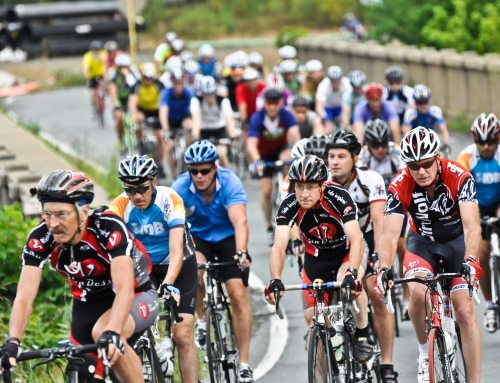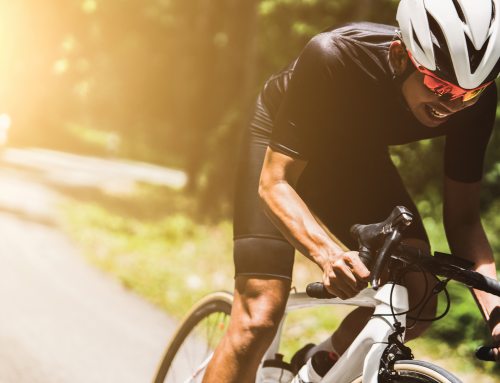By Brian Beatty
Many of us can relate to the experience of grinding away on the bike… whoomph, whoomph, whoomph… only to passed by someone turning over the steady drone tone of wrrrrrrrrrrrr. The steady tone of the rubber on the road comes from the smooth and even application of power to the pedals. Smooth power comes from efficient form.
For efficient form in cycling, the motor is more important than the machine. You can spend a lot of resource upgrading & tweaking your equipment, but nothing gets a bang for the buck reward like improving the efficiency of the motor. This means training & form. This article will help with form, for training; there are many great coaches in this area.
Identifying areas where one loses power is not always easy when on the road. However a little time with your bike on a trainer pedaling with one leg will quickly show where you can make gains. Notice where in the pedal stroke you lose contact, the chain goes slack, the sound changes or you simply struggle to get your leg around. Also notice if you move around on the saddle or have to shift your body or weight around above the bike when using only one leg. The “Over the Top for Cycling Success” in the last Cycling issue of Endurance focused on balancing the force production from the various muscle groups of the leg. This time around we will turn our attention to creating a stable core for cycling.
The cycling core consists of everything between the sitting bones on the saddle to the hands on the bars. A stable core allows the legs to move smooth and evenly. If you find yourself rocking or wobbling with the one leg trainer drills, that wobble is probably still being created when both legs are working together. The wobble may not be noticeable in normal riding, but that is usually because extra work is being done to absorb or compensate for the wobble. The ideal core control is a still and quiet body that allows the legs to move smoothly and evenly. To achieve this, each leg must be able to move independently without shifting the pelvis or body. Exercises such as variations of planks or quadruped moves are great for gaining the ideal core control for cycling. The exercise goal is to challenge moving the legs without moving the torso. Adding unstable surfaces such as exercise balls can give a fun challenge while yielding great insight into form and improving efficiency. This month’s Core Corner by Balanced Movement Studio demonstrates such an exercise with the One Knee on Ball Cycling Plank. Get stable, free the legs & have fun.
# # #
Brian Beatty, PT, CFP spends most of his days at Proaxis Therapy in Carrboro, NC, helping folks discover how to move better, feel better & get more out of life. When not there, he spends as much time as he can but not as much as he wants, spinning wheels beneath his feet in the surrounding roads & woods. www.Proaxistherapync.com





